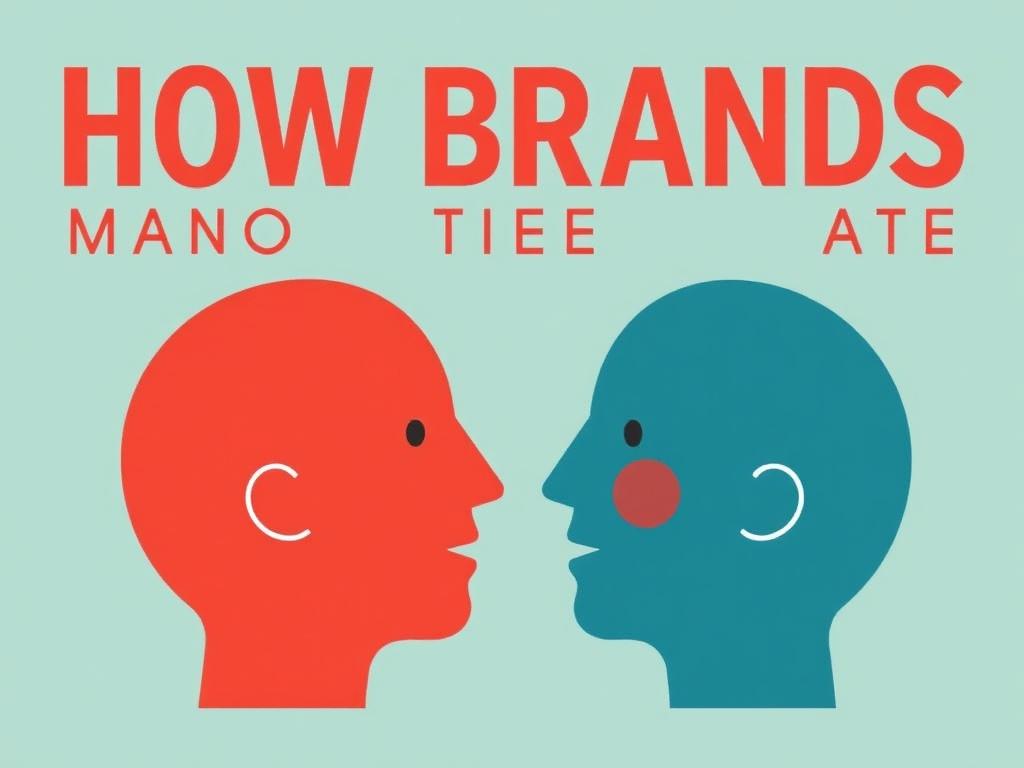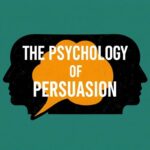Understanding the Power of Emotions in Branding
Have you ever found yourself drawn to a product, not because of its features or price, but because it *feels* right? That feeling is not an accident. Brands have mastered the art of emotional manipulation—tapping into our subconscious to influence what we buy, how we think, and even how we see ourselves. Emotions are powerful drivers of consumer behavior, often overriding logic and reason. This article explores how brands manipulate emotions, the techniques they use, and why it matters to you as a consumer.
Emotions connect us deeply to experiences, memories, and identity. When brands align with these feelings, they build loyalty that transcends the product itself. It’s why some companies have fans who stick with them through thick and thin, while others remain just another option on the shelf. Emotional branding works because people don’t just buy products—they buy stories, dreams, and the promise of feeling a certain way.
The Psychological Basis Behind Emotional Branding
To truly grasp how brands manipulate emotions, we need to look at the science behind it. Human decision-making is enormously influenced by emotions before logic kicks in. Studies of the brain reveal that feelings ignite our decision-making centers, sometimes bypassing rational analysis altogether. When marketers understand which emotions trigger specific responses, they can craft campaigns that encourage you to feel happy, nostalgic, or even anxious—depending on what drives purchasing behavior.
The concept of emotional branding rests on several psychological principles:
- Emotional Conditioning: Just like Pavlov’s dogs learned to associate a bell with food, consumers can learn to associate certain brands with a positive feeling.
- Social Proof & Belonging: People want to belong and often choose brands endorsed by others or those that represent a social group with shared values.
- Storytelling: Narrative structures engage empathy and make messages memorable, allowing brands to embed themselves in our personal stories.
- Fear of Missing Out (FOMO): Leveraging anxiety or scarcity creates urgency that pushes consumers to act quickly.
Recognizing these mechanisms offers valuable insight into why you might feel emotionally connected to a brand even before considering its actual usefulness.
Common Emotional Triggers Brands Use
Brands carefully select emotional triggers to appeal to their audience’s underlying desires and fears. Here’s a breakdown of some of the most powerful emotions that marketers frequently tap into:
| Emotion | Why It Works | Example |
|---|---|---|
| Happiness | Associating the brand with joy makes consumers more likely to buy and relive positive feelings. | Coca-Cola ads often show people sharing happy moments. |
| Nostalgia | Triggers warm memories, strengthening emotional bonds. | Disney uses nostalgia to appeal to adults and children alike. |
| Fear | Creates urgency and drives protection-oriented purchases. | Insurance companies highlight risks to encourage sign-ups. |
| Trust | Builds long-term loyalty and reassures consumers. | Apple promotes a trustworthy, premium image. |
| Belonging | Humans crave connection; brands can symbolize community. | Nike’s campaigns often focus on strength, unity, and achievement. |
| Excitement | Drives impulsiveness and anticipation. | Video game launch events create hype and energy. |
This list isn’t exhaustive, but it highlights the diversity of emotions exploited in marketing. Whether subtle or overt, these feelings pull consumers toward brands in ways that logic alone cannot.
Techniques Brands Use to Manipulate Emotions

So, how exactly do brands trigger these emotions? Let’s dive into several key methods marketers rely on to influence your emotional state.
Storytelling that Resonates
Nothing connects like a good story. Brands often craft narratives that mirror your experiences or dreams. These stories include relatable characters, conflicts, and resolutions, mirroring the human journey. By positioning their product as a solution or essential part of the story, brands insert themselves directly into your emotional landscape.
Take for instance a luxury car commercial showcasing a driver’s journey from humble beginnings to success. It’s not just selling a vehicle—it’s selling aspiration, achievement, and the thrill of that accomplishment. When you watch such stories, your brain not only imagines the experience but empathizes with the emotions being displayed.
Visual and Auditory Cues
Colors, shapes, music, and sounds profoundly affect mood. Brands meticulously select these elements to create specific emotional atmospheres:
- Colors: Red induces excitement or urgency, blue builds trust, and green connects to nature or health.
- Music: Major chords often invoke happiness; slower tempos can invoke calmness or melancholy.
- Imagery: Smiling faces, family scenes, or natural landscapes evoke feelings of warmth and connection.
By pairing these sensory cues with messages, brands deepen emotional resonance without words. For example, a charity campaign featuring heartfelt, melancholy music with images of vulnerable people seeks to stir empathy and motivate donations.
Celebrity Endorsements and Influencers
People naturally look up to public figures and trust their opinions. When a favorite celebrity endorses a product, their positive emotional aura transfers to the brand. Social media influencers take this even further, appearing as relatable friends who share personal recommendations. Consumers are thus more likely to buy a product that an admired personality uses or supports.
Scarcity and Urgency
Creating a fear of missing out is a common emotional manipulation tactic. Time-limited offers, “only a few left” notifications, or exclusive membership perks trigger anxiety. This technique urges consumers to act quickly rather than think through their options rationally. It leverages the emotion of fear—not of physical harm, but of loss or exclusion.
Personalization
The more personal a message feels, the deeper its emotional impact. Brands increasingly use data to tailor their advertising to individual preferences, demographics, and even moods. When an ad feels like it’s speaking directly to you, your brain starts to build a connection, increasing the likelihood of engagement and purchase.
The Role of Emotional Resonance in Brand Loyalty

Once a brand has successfully forged an emotional connection, maintaining that bond becomes crucial. Emotional resonance fuels loyalty, meaning customers are likely to choose the same brand repeatedly and even forgive mistakes. This loyalty also encourages advocacy—giving positive word-of-mouth that can be more persuasive than any paid advertisement.
Emotional resonance arises from consistency. When the brand message, product experience, and customer service align emotionally, consumers feel understood and valued. This feeling of mutual respect and attachment is the secret to long-term success.
Brands use various strategies to cultivate this:
- Continually reminding customers of the emotional values they represent through ongoing campaigns.
- Building communities and clubs around shared identities.
- Creating product experiences that reinforce positive feelings post-purchase.
When you reflect on your favorite brands, chances are their emotional resonance is what keeps you coming back.
Ethical Questions Surrounding Emotional Manipulation
While emotional branding is a powerful tool, it raises crucial ethical concerns. Manipulating emotions can border on deception if consumers aren’t given full information or if marketers exploit vulnerabilities like fear or insecurity.
Common ethical questions include:
- Is it right to use fear-based tactics to sell products?
- Should brands be transparent about how they use emotional data?
- How do marketers avoid exploiting vulnerable groups such as children or those with mental health challenges?
- Can emotional manipulation be considered a form of coercion?
Consumers can protect themselves by becoming aware of emotional marketing tactics. Meanwhile, many advocate for stricter regulations to prevent abuse, insisting brands maintain honesty and respect for consumer autonomy.
How to Recognize and Resist Emotional Manipulation by Brands
Navigating a marketing landscape filled with emotional appeals can be challenging, but not impossible. Here are practical steps to stay informed and make smarter decisions:
- Pause and Analyze: When an ad makes you feel strongly, take a moment to ask why. Is it the product or the story?
- Look Beyond the Surface: Check the facts, read reviews, and compare features without emotional distractions.
- Identify Emotional Triggers: Are they appealing to happiness, fear, or belonging? Awareness is key to resistance.
- Limit Impulse Decisions: Avoid purchases driven by urgency unless fully considered.
- Seek Authenticity: Support brands that demonstrate genuine values and transparency.
By understanding emotional manipulation, you empower your consumer self and make choices aligned with your real needs.
Examples of Brands Mastering Emotional Manipulation

Many well-known companies display outstanding skill in emotional branding. Here’s a quick look at some standout examples:
| Brand | Emotional Strategy | Key Campaign |
|---|---|---|
| Coca-Cola | Happiness and togetherness | “Open Happiness” campaign featuring moments of joy and connection |
| Apple | Innovation and trust combined with minimalist design | “Think Different” inspiring creativity and individuality |
| Nike | Belonging, achievement, and perseverance | “Just Do It” encouraging personal victory and community |
| Disney | Nostalgia and family bonds | Classic storytelling that appeals to multiple generations |
These brands don’t just sell products; they sell feelings, identities, and dreams—powerful forms of emotional currency.
Conclusion
Brands manipulate emotions in subtle and sometimes not-so-subtle ways to influence our buying choices and deepen our loyalty. From storytelling and visual cues to personalized messages and celebrity endorsements, marketers tap into universal feelings like happiness, fear, trust, and belonging. Understanding these techniques equips you to see past the surface, recognize when emotions are being used as a tool, and make decisions that truly serve your needs and values. Emotional manipulation isn’t inherently bad—it becomes problematic when it exploits vulnerabilities or overrides informed choice. By becoming savvy consumers, you can appreciate the art of emotional branding while maintaining control over your own emotions and wallet. Ultimately, the power lies in awareness—because the smarter we are about how brands manipulate emotions, the stronger our freedom to choose becomes.





















Я давно заметила, что бренды играют на эмоциях, чтобы заставить нас покупать. Полезно понимать эти приёмы, чтобы принимать более осознанные решения.